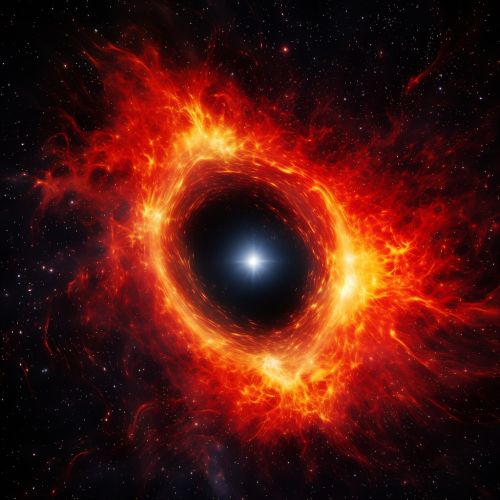Black Holes
Introduction
A black hole is a region of spacetime exhibiting gravitational acceleration so strong that nothing—no particles or even electromagnetic radiation such as light—can escape from it. The theory of general relativity predicts that a sufficiently compact mass can deform spacetime to form a black hole.


History
The idea of a body so massive that even light could not escape was first proposed by geologist John Michell in a letter written to Henry Cavendish in 1783. The term "black hole" was coined many years later in 1967 by American astronomer John Wheeler.
Formation
Black holes are formed from the remnants of massive stars. When such a star has exhausted the nuclear fuel in its core and exploded as a supernova, what remains can become a black hole. If the remnant core is less than about three solar masses, it becomes a neutron star. However, if the core remnant is more than about three solar masses, the force of gravity overwhelms all other forces and produces a black hole.
Properties
Black holes have three main properties: mass, spin, and charge. These properties are measurable with astronomical observations of a black hole's effects on its surroundings.
Mass
The mass of a black hole determines the size of the event horizon, which is the boundary around the black hole from which nothing can escape.
Spin
Black holes can rotate, and the rotation is measured by a dimensionless spin parameter. If the black hole is spinning, it can drag nearby space and matter around with it, a process known as frame-dragging.
Charge
In theory, black holes can have a charge. However, in practice, isolated black holes are expected to be electrically neutral, as the process of accretion is expected to neutralize any initial charge.
Types of Black Holes
There are three types of black holes: stellar, supermassive, and intermediate.
Stellar Black Holes
Stellar black holes are formed by the gravitational collapse of a massive star. They have masses ranging from about 5 to several tens of solar masses.
Supermassive Black Holes
Supermassive black holes are found at the centers of most galaxies, including our own Milky Way. They have masses ranging from millions to billions of solar masses.
Intermediate Black Holes
Intermediate black holes are a hypothesized class of black holes with masses significantly more than stellar black holes but less than supermassive black holes. Their existence is not yet confirmed.
Observations and Discoveries
Black holes cannot be observed directly due to their strong gravitational pull, which traps all light. However, they can be observed indirectly by their effects on nearby matter. For instance, a black hole can accrete matter from a nearby star, forming an accretion disk.
In 2019, the Event Horizon Telescope collaboration released the first direct image of a black hole's event horizon. The image was of the supermassive black hole at the center of the galaxy M87.
Black Holes and Quantum Mechanics
The study of black holes has led to important progress in quantum mechanics. The discovery of Hawking radiation, predicted by physicist Stephen Hawking, showed that black holes can slowly lose energy, which leads to black hole evaporation.
